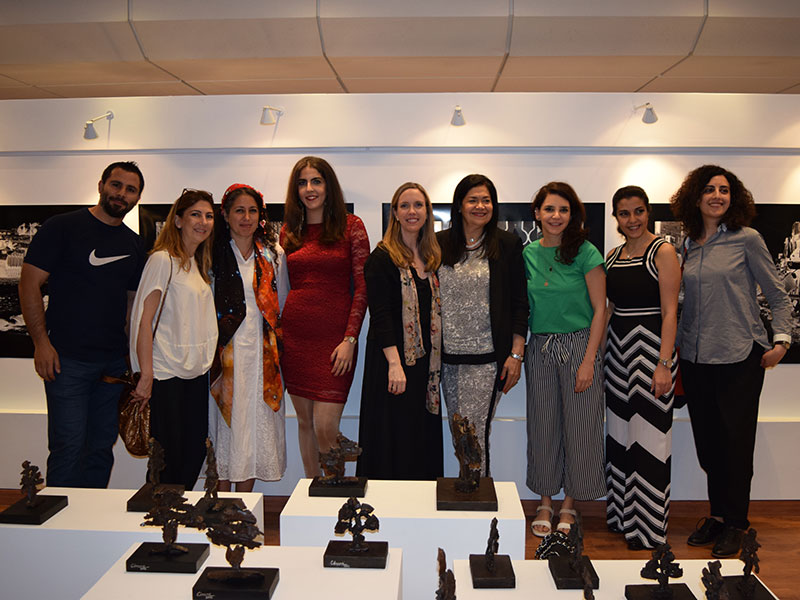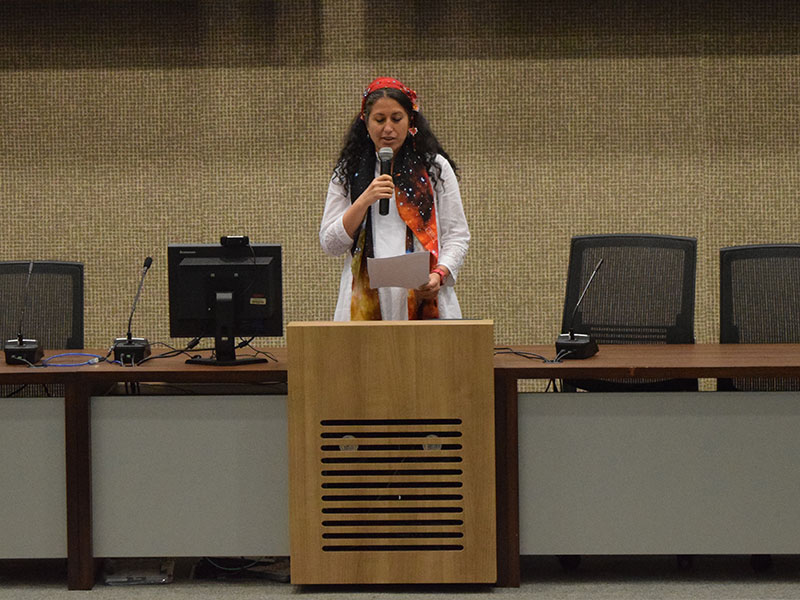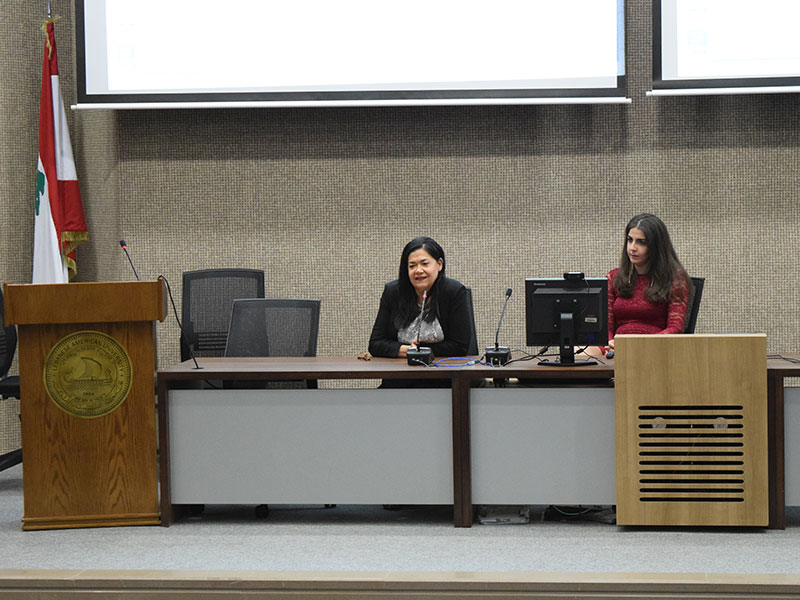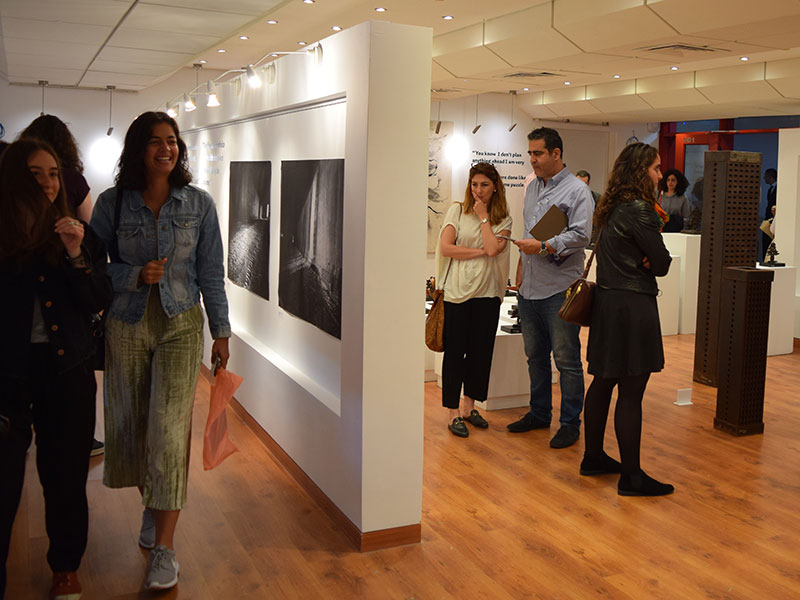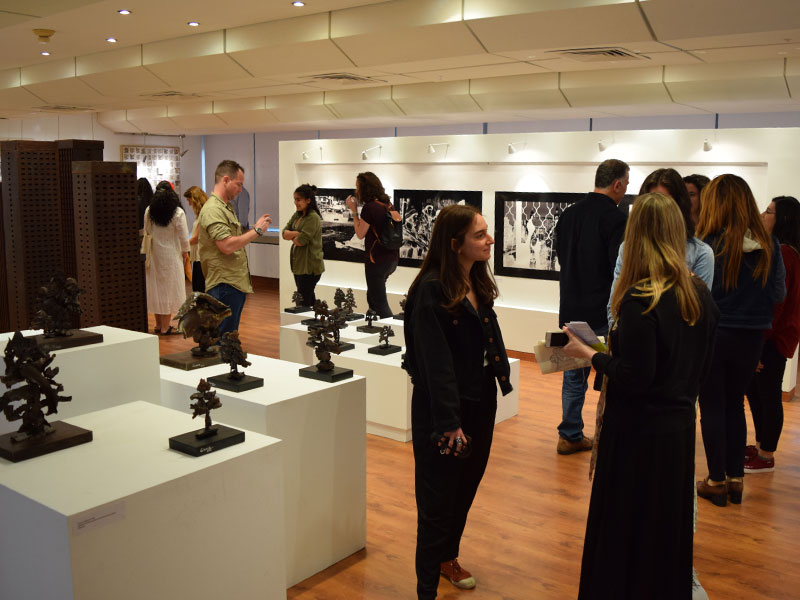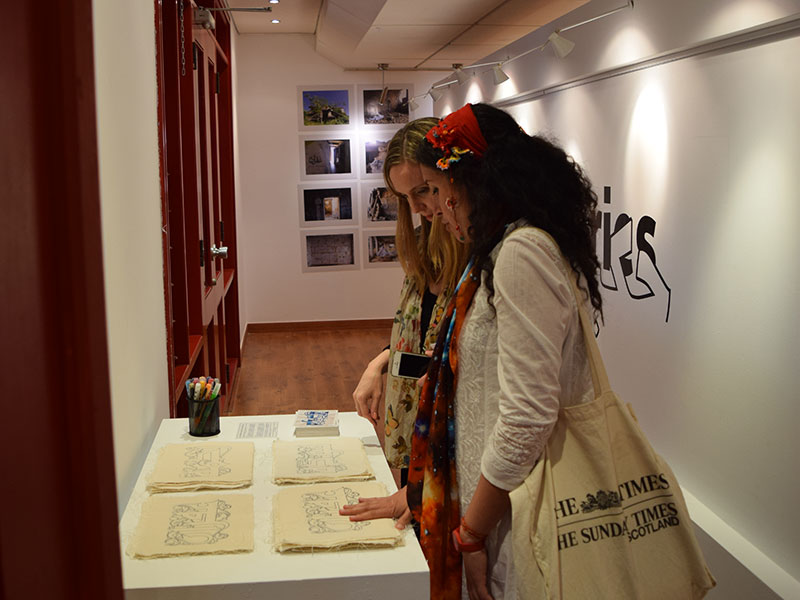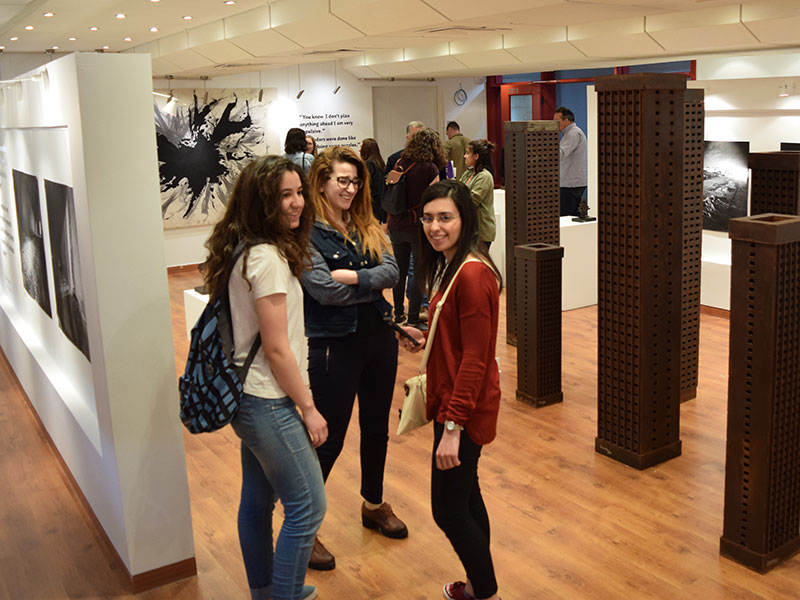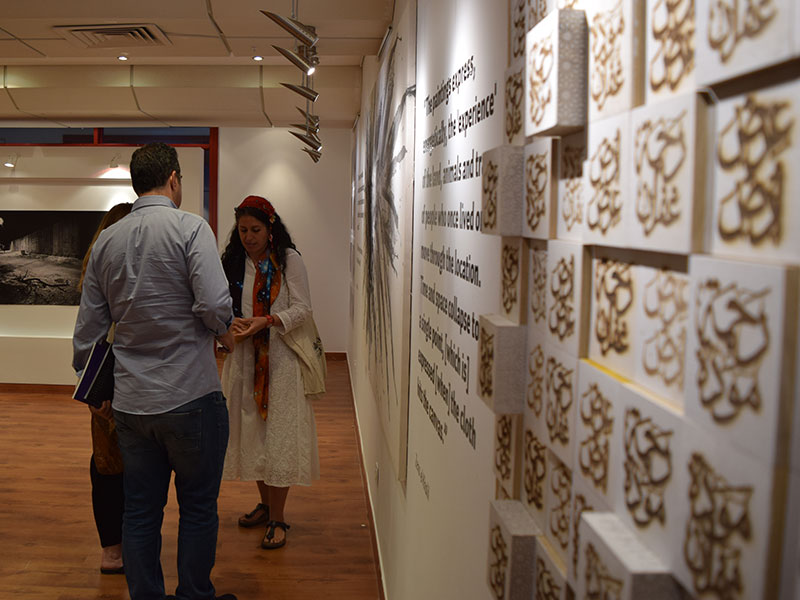Artists Hold a Mirror to the Scars of Conflict
Stories of Stories, the Department of Art and Design’s second annual art talk, featured three artists whose works explore and confront the history of regional conflict, evoking deeply personal responses to violence and the prospect of peace.
Lebanese artist Zena el Khalil began by soliciting the audience to consider art as a catalyst for peacebuilding.
“Can it change Lebanon?” she asked, “Change or maybe even influence the way people think or feel? Could a sculpture put an end to wars here in the Middle East? Is it possible to create art that provokes through love?”
Khalil traces her artistic journey to a family trip to Italy at the age of 12, where she experienced a something of a Stendhal moment before Michelangelo’s Pieta. She said she realized then that she wanted not just to be an artist, but to use art to alleviate suffering and promote compassion and forgiveness.
The potential for art to provide catharsis is one of the driving forces behind Khalil’s work. Her performance piece “Pink Bride of Peace” had her run about the streets of Beirut, giving out hugs and flowers in the name of love and non-violence.
Khalil also presented a series of performance pieces and action paintings she created after visiting her parents’ home in southern Lebanon, which had been appropriated by the Israeli army and used as a detention center.
She described how the act of making art helped her overcome her anger at what had happened. “Within that storm I heard a quiet voice say, ‘Let it go. You can’t change the past. Let it go.’”
The notion of art as an agent of transformation was central to many of the works on display. Lebanese sculptor Ginane Makki Bacho recounted the genesis of one of her collections, born of the feeling of violation she experienced on returning to her bombed out Beirut apartment in 1983.
“I took one [piece of shrapnel] in my hands, I felt speechless. I felt like it’s the weapon of the enemy, [that] he has his fingerprints on it and like they melt with my own, and I didn’t want this,” she said.
“So I wanted really you know [to] take my revenge, do something instead of killing. Doing something that could show myself. Showing that I’m stronger.”
What Bacho did was to use the pieces of shrapnel to create sculpture, reconfiguring the deformed metal into abstract and figurative compositions. By repurposing the fragments, she said she was able to assert dominance over the very physical material that had destroyed her home.
Of her numerous compositions, perhaps the most defiant is a series where she has welded the shrapnel together to resemble small Cedar trees. “They were items that stood as symbols of Lebanon and life as an experience in Lebanon in particular, and symbols of humanity in general,” she said.
Bacho also spoke of the importance of art as an inescapably temporal document, reflecting the environment in which it was produced. “Many people ask me, “Why is your work sad and pessimistic?’ I tell them my work is sad because the artist is a witness of the times [they] live in, and these are sad times and all is not well with life; we are living difficult times, but it is not pessimistic at all. Without memory, history is not built.”
The role of the artist as witness was undertaken in different circumstances by Palestinian photographer Rula Halawani, who lives and works in East Jerusalem. Denied a visa to Lebanon, she sent a video detailing her journey from documentary photojournalism to more expressionist depictions of violence in the West Bank.
After pursuing a degree in photography, Halawani returned to Palestine during the first intifada, putting her skills to use as a freelance photographer, ultimately joining the staff at Reuters.
But the work took its toll. Covering clashes and demonstrations in Hebron in 1997, she watched as a teenage boy she knew was shot dead by Israeli soldiers.
“After that I decided I don’t want to do news photography or photojournalism anymore. I just can’t do it. I just can’t keep documenting and seeing and witnessing young people getting killed in front of my face and I can’t do anything. My pictures I felt, they’re not helping, they’re not doing anything.”
She moved away from news, instead photographing people as they went about their daily lives. Following a number of foreign residencies and a master’s degree in the UK, she returned to teach at Birzeit University in 2001.
But just a few months later the Israeli army launched a major incursion into the West Bank. Again, she felt compelled to document it. But her striking photographs of the operation are printed as negatives, with large spaces filled with an alien darkness.
“I could have published them actually the way they are, as documents,” said Halwani. “[But] in negatives the pictures were able to express my own feelings merged with the feelings of my people.”
“As negatives they express the negation of our reality that the invasion had represented. The darkness allows the spectator to feel the darkness of the days I experienced during this incursion.”
Though strikingly different in form and material, the works share a language in the way they process violence, exploring the role of art as a vehicle for personal catharsis, historical documentation, and the reassertion of the rights of victims.
The talks were followed by a panel discussion and the opening of the annual exhibition.
